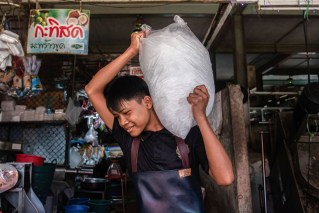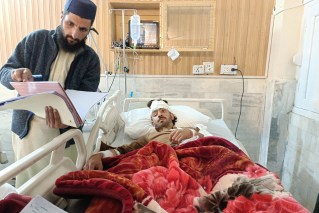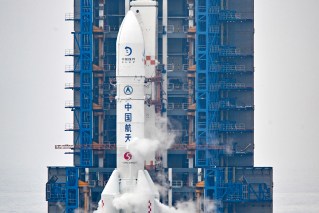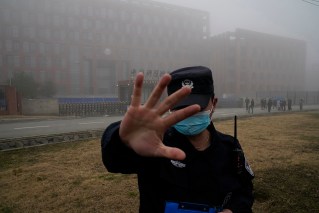At least eight people have died in and around Seoul, South Korea overnight, after torrential rain knocked out power, caused landslides and left roads and subways submerged.
The southern part of the national capital received more than 100 millimetres of rain per hour on late Monday, with some parts of the city hit with 141.5 millimetres, the heaviest rainfall in decades, according to the Korea Meteorological Administration.
President Yoon Suk-yeol on Tuesday visited a semi-basement apartment where three family members had died the night before after swift moving flood waters filled the space.
The dangers of such underground flats, called banjiha, were famously depicted in a flooding scene in the 2020 Oscar-winning film Parasite.
Mr Yoon told the area’s residents he would try to ensure their lives returned to normal as quickly as possible, and he instructed officials to look at measures to better ensure housing safety, according to a statement from his office.
At least five people had died in Seoul and three others in the neighbouring Gyeonggi Province by early Tuesday, the Central Disaster and Safety Countermeasures Headquarters said.
Four, including the three family members, had died after being drowned in flooded buildings, one was believed to have been electrocuted, another person was found under the wreckage of a bus stop, and the others two died in a landslide, it said.
At least nine people were injured, while seven were missing.
The heaviest rain ever measured in the history of Seoul, pop 25 million.
This is what happens when you warm a planet pic.twitter.com/mGabbUHjPK— Bill McKibben (@billmckibben) August 9, 2022
In the glitzy, dense Gangnam district, some buildings and stores were flooded and were without power, while cars, buses and subway stations were submerged, leaving people stranded.
Data showed at least 765 facilities had been damaged. About 52 highways and roads have been blocked.
About 391 people were displaced in the greater Seoul area, most of whom had to stay at local schools and gyms. A further 399 had temporarily moved to community centres and schools, according to the data.
The headquarters raised the crisis alert to the highest and requested organisations adjust their working hours.
The KMA issued heavy rain warnings across the capital and the metropolitan area of 26 million as well parts of Gangwon and Chungcheong Province.
The KMA expects heavy rainfall for the central part of the country to continue until at least Wednesday.
South Korea often experiences heavy rains in summer, but “such sharp increase in precipitation and frequent torrential rains cannot be explained without the big trend of climate change,” a KMA official, who spoke in condition of anonymity, told Reuters.
“This phenomenon is seen occurring more often due to climate change that has resulted in a prolonged summer.”








